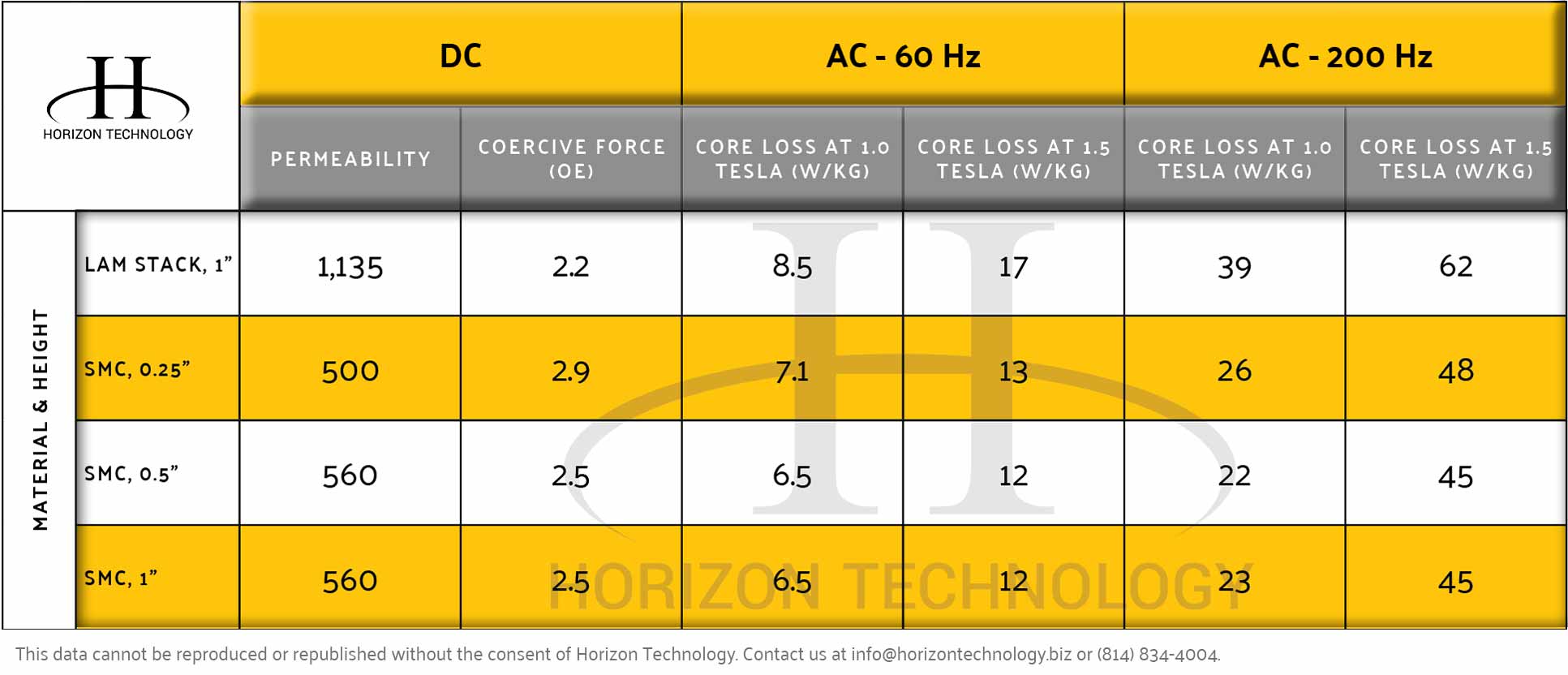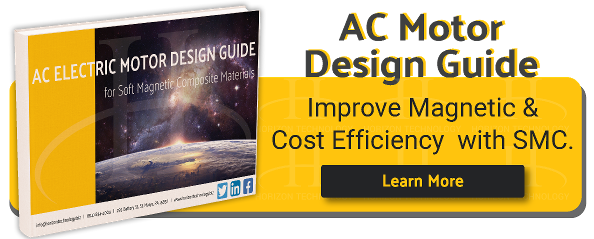Vehicles are filled with motors -- and the number continues to climb.
More motors means more performance demands. And that means more research is necessary to identify the best electric motor core materials for efficiency and magnetic performance.
To achieve big things, you have to start small. For your convenience, we’ve compared a 1” tall steel lamination stack to 1”, 0.5”, and 0.25” components made with soft magnetic composite (SMC). As you’ll see, the differences in performance are, indeed, a big thing.
Electric Motor Core Material: A Brief Intro to SMCs
As we make a metal component longer, what happens to performance? You already know what happens to a lamination stack -- performance tails off.
But what about with powder metallurgy materials -- specifically, with SMCs?
As a reminder, soft magnetic composites are powdered metals coated with an electrically insulating layer. These materials offer:
- Reduce core losses
- Complex, 3D shape-making
- Customizable magnetic performance
- Reduced motor assembly operations
- Cost efficiency
Not all soft magnetic powders are made alike. You’ll see variations of performance across different grades, which allows you to match performance needs to your budget.
Soft Magnetic Composite vs. Lamination Stack
Welcome to our cool experiment.
In comparing stamped laminations vs. powder metallurgy, we found there are no fundamental differences in final part size. Even more notable, there’s a loss in performance with electrical steel lamination -- regardless of epoxy, welding, indent, and assembly choices.

The above data shows that a 1” motor lamination steel assembly has a DC permeability of about 1,100, with a DC coercive force of about 2.2 oersted. Past tests of single-sheet laminations have demonstrated a max permeability of 3,000+.
Although laminations are a proven asset for minimizing losses, the inherent air gaps formed during the laminating process significantly reduce the permeability relative to a single sheet.
Losses in Electric Motor Core Materials
(Interlock Feature of Lamination Assembly)
In our test, the lamination assembly (see the nearby image) had a mechanical feature interlocking the laminated sheets to each other. We assumed this assembly feature would create shorting between the various lamination stacks -- this fact is now supported by the core loss data we collected.
The core losses of the lamination assembly were at least 20% higher at 60 Hz relative to the SMC material. When the SMC part was tested with frequency increasing to 200 Hz, it yielded core losses that were significantly lower than the lamination assembly.
As we continue to add laminations, we expect those core losses to continue increasing. However, from the above table, it seems the magnetic performance of SMC isn’t affected by the compacted height of the component. Compacting to larger heights has no detrimental influence on permeability and core loss values.
This has been an underappreciated aspect of moving your electric motor component to an SMC design. You’ll get a single, complex-shape component, whereas traditional laminations degrade in magnetic performance as you move from a single sheet to a stack.
Before You Switch Your Electric Motor Core Material ...
What should engineers consider when switching their electrical steel applications to SMCs?
A lot, perhaps starting with your part’s length.
You’ve seen the results at 1”. What if your part is 3”? Or 4”? Or even longer?
Of course, length is only one consideration -- let’s not forget your overall part performance in terms of losses and permeability.
Whether you’re already experimenting with a more modern electric motor, or just starting to research alternative materials, there’s still much to learn. For more on soft magnetic powder and improving your electric motor’s efficiency, download the visual primer below:



